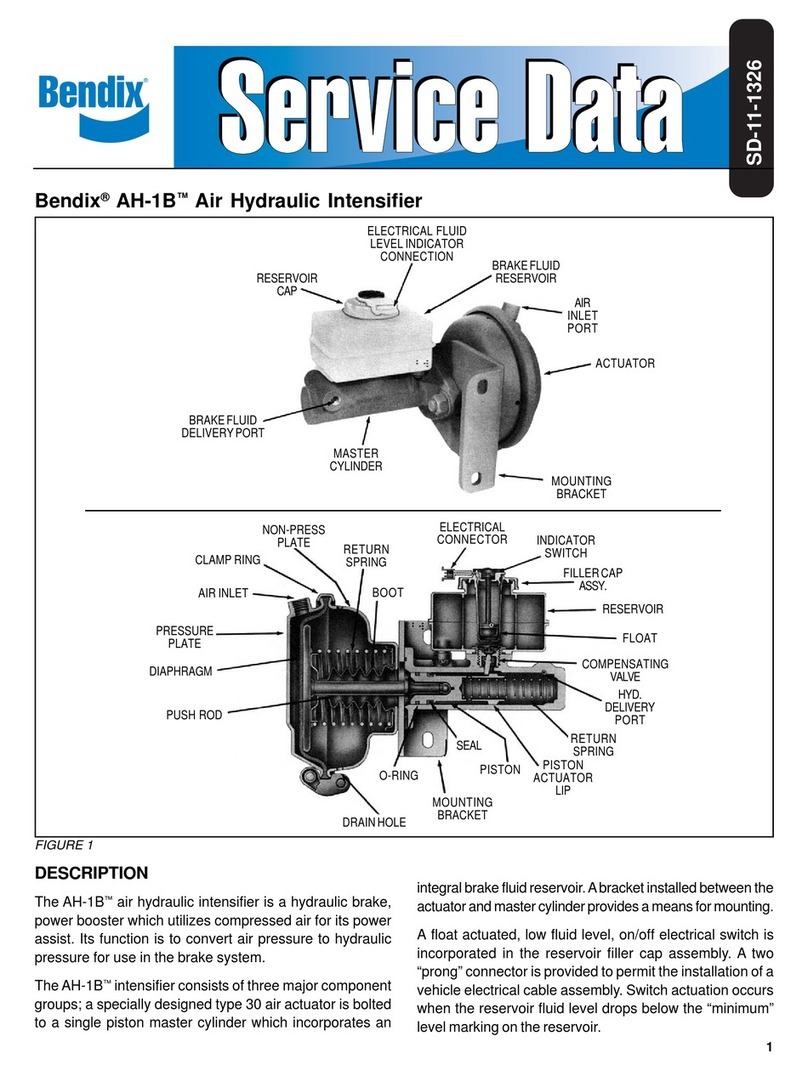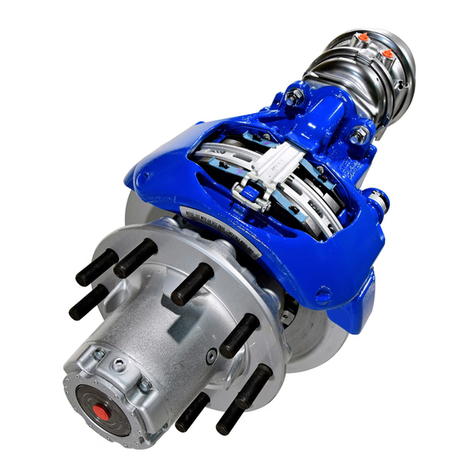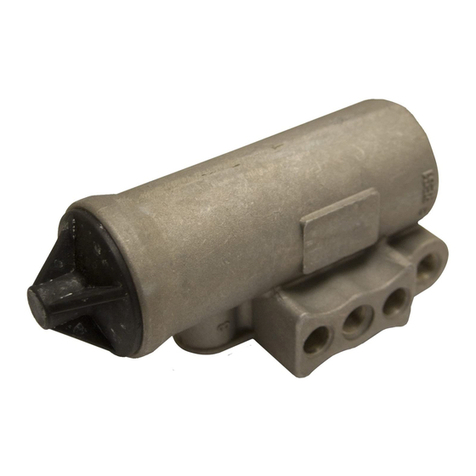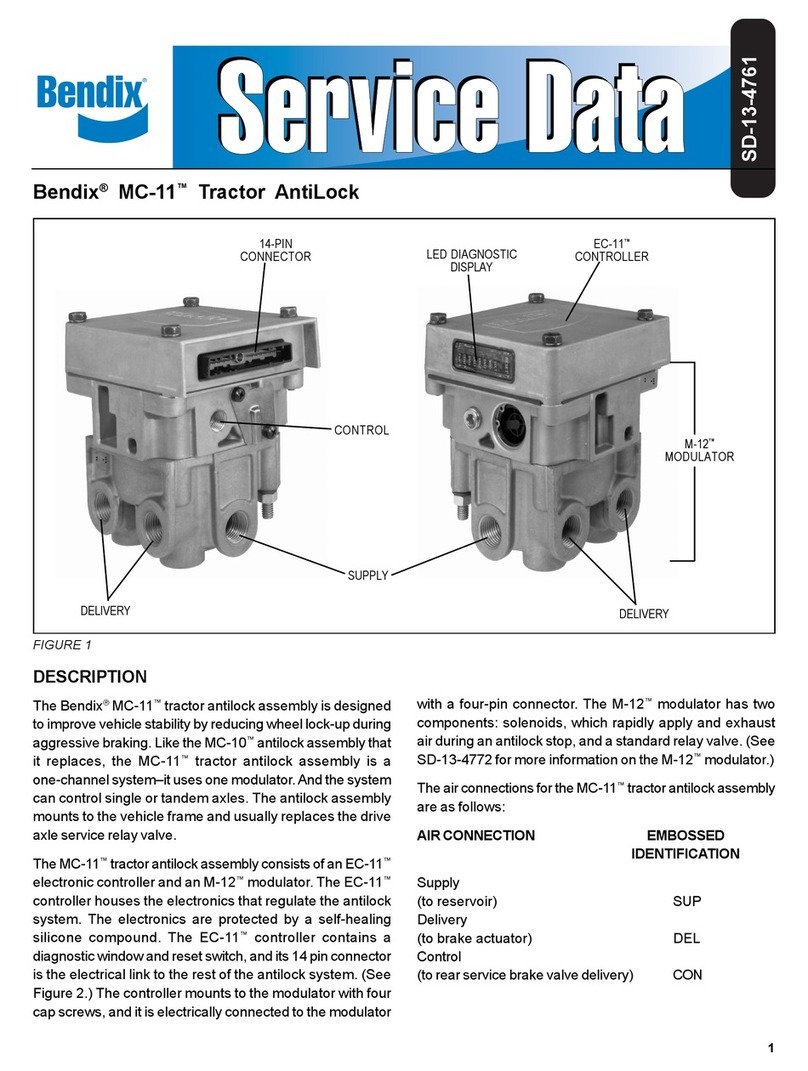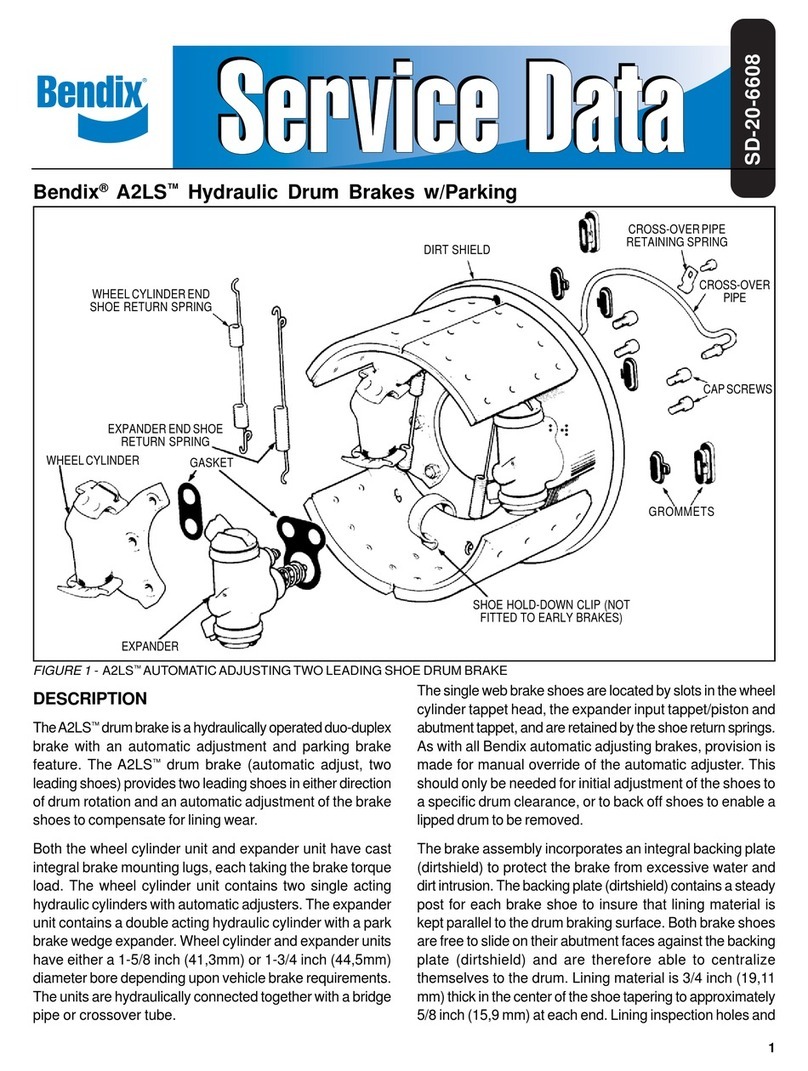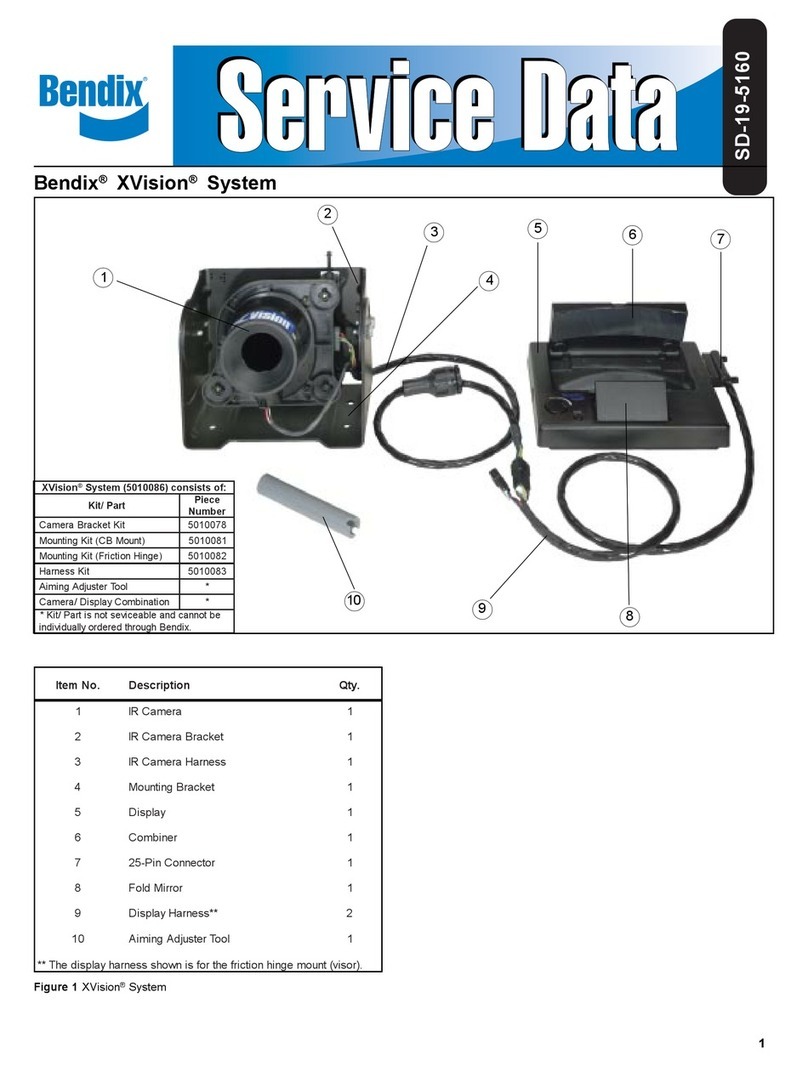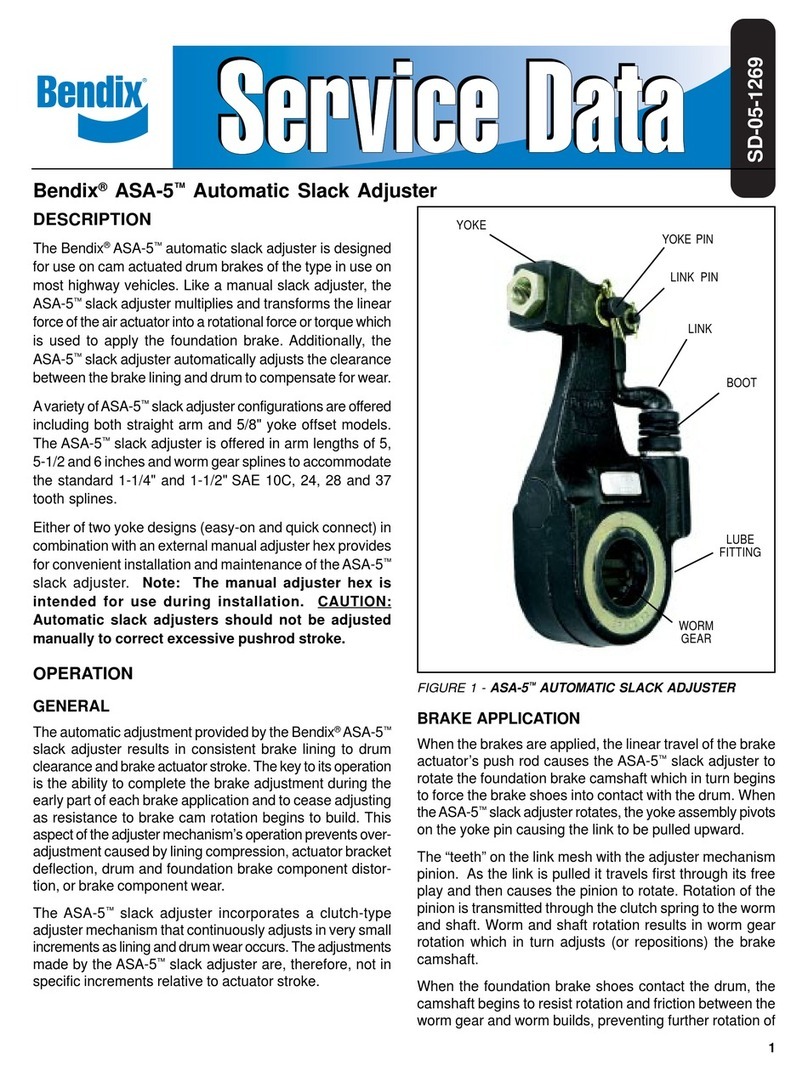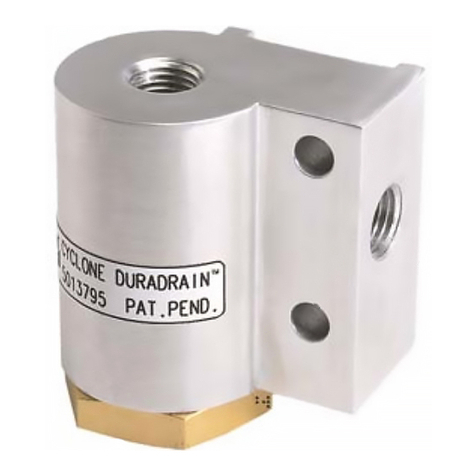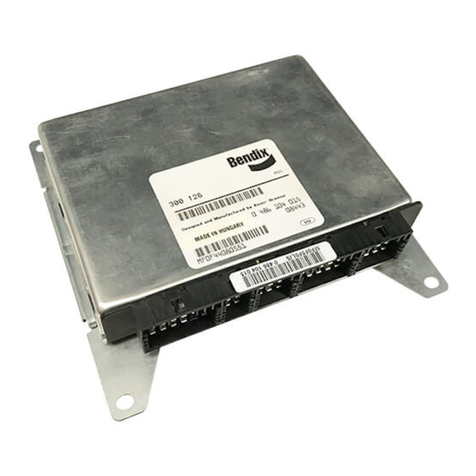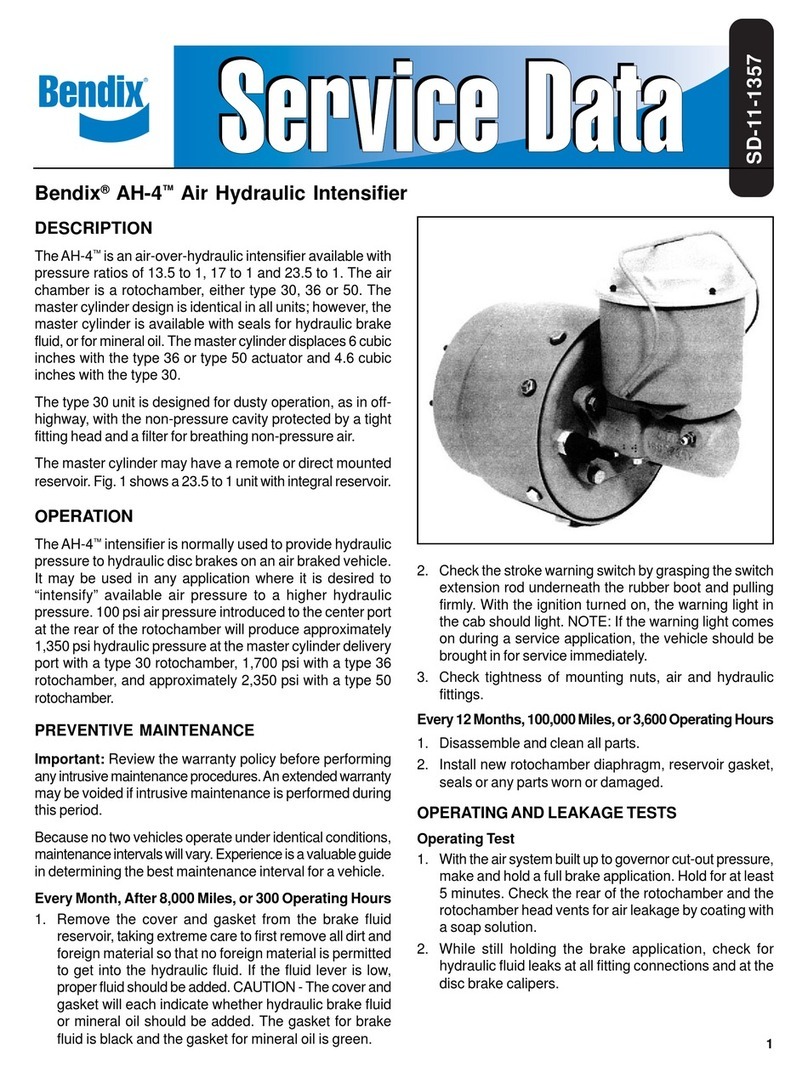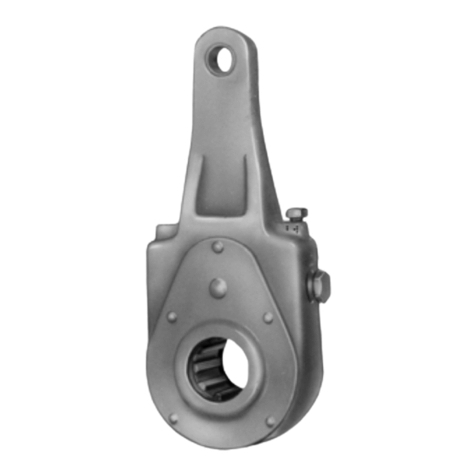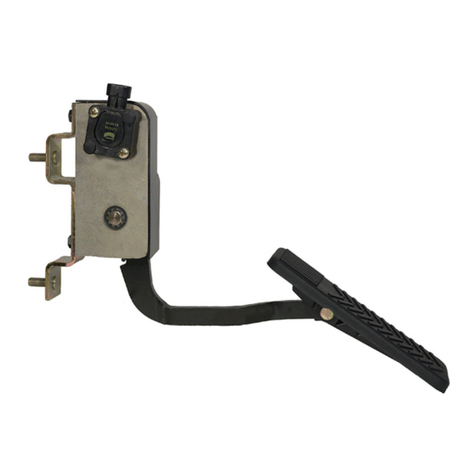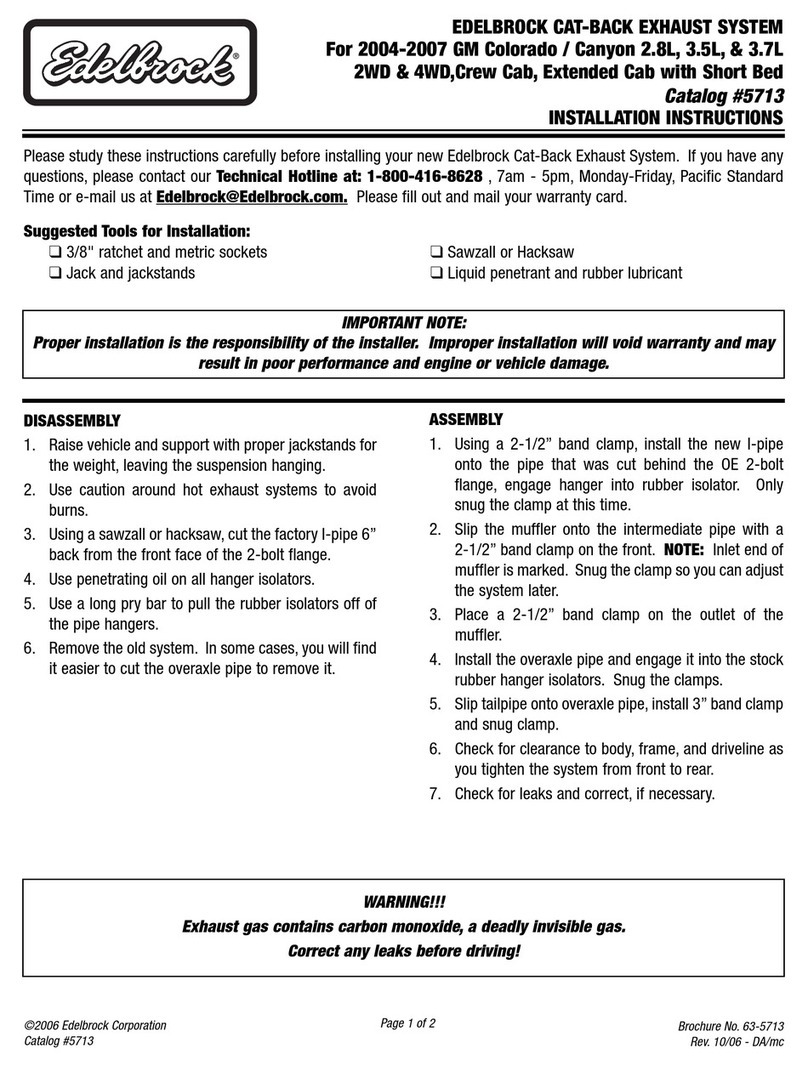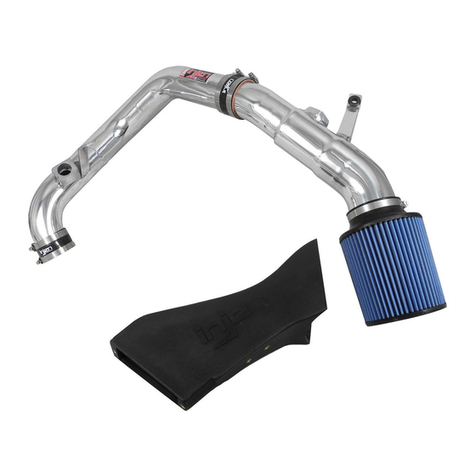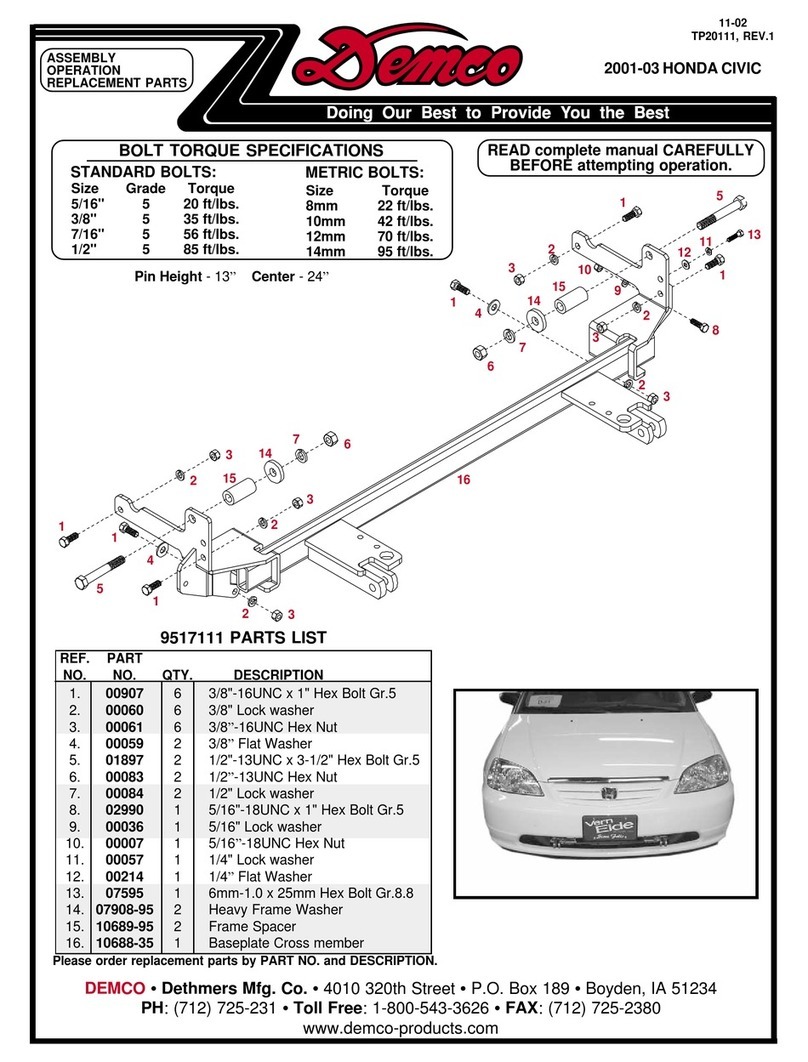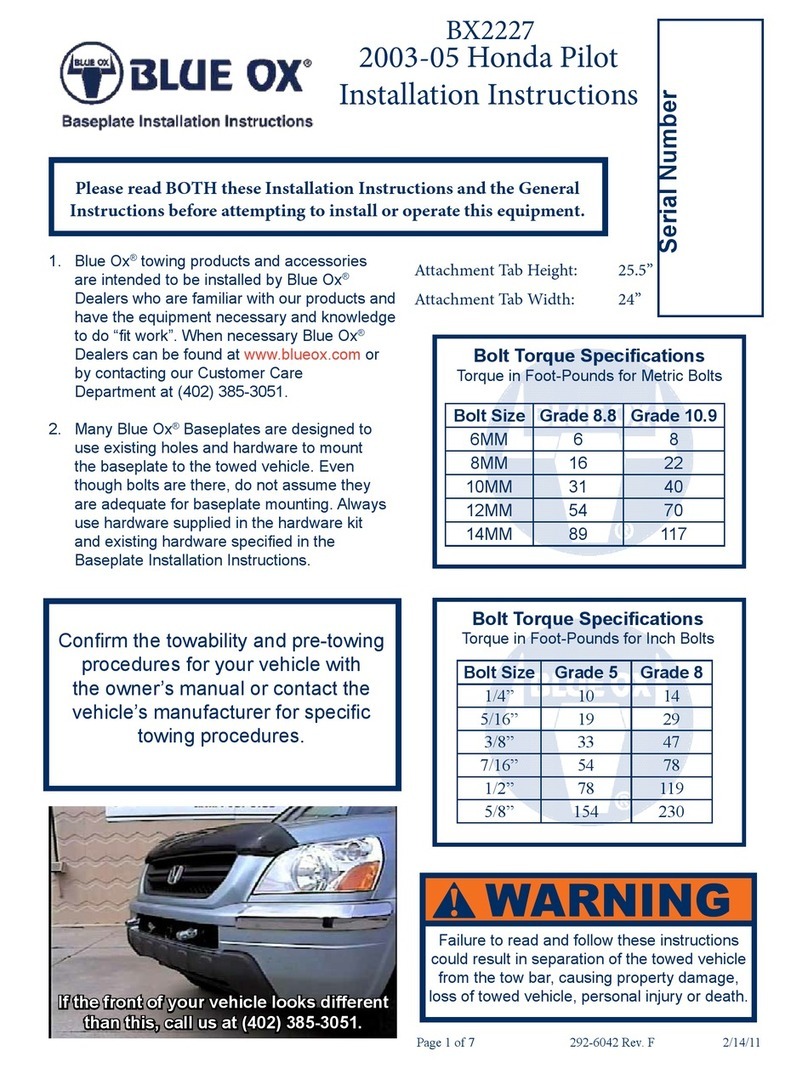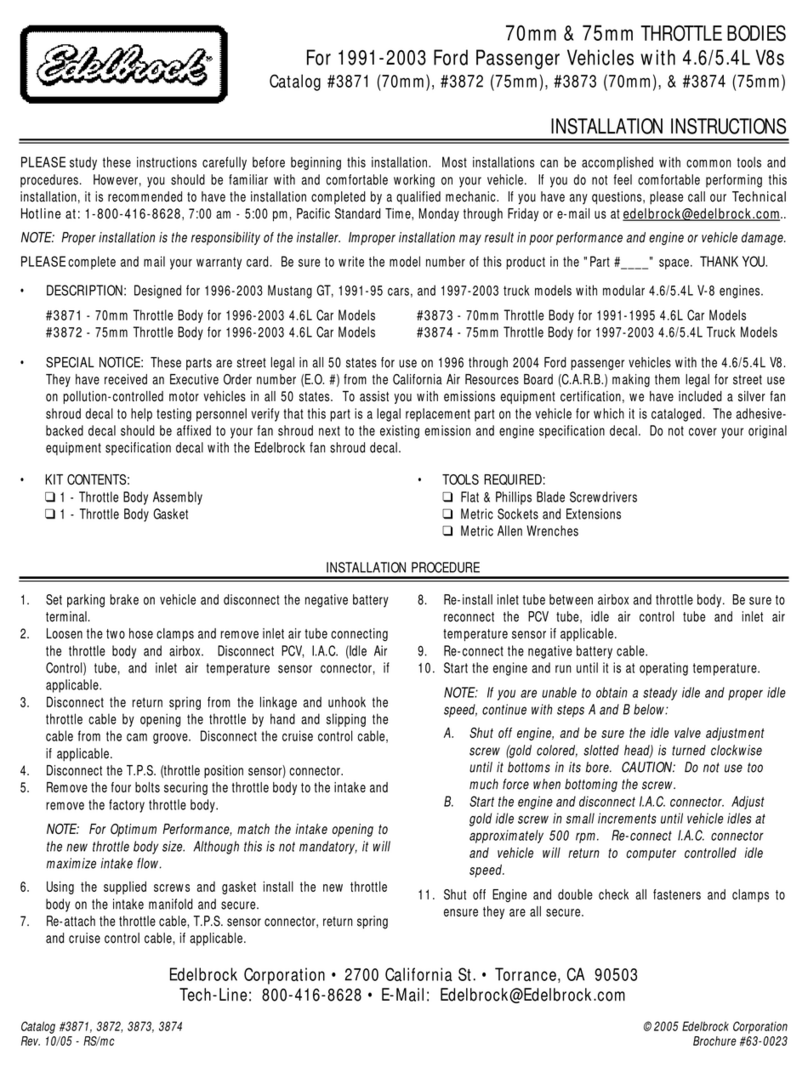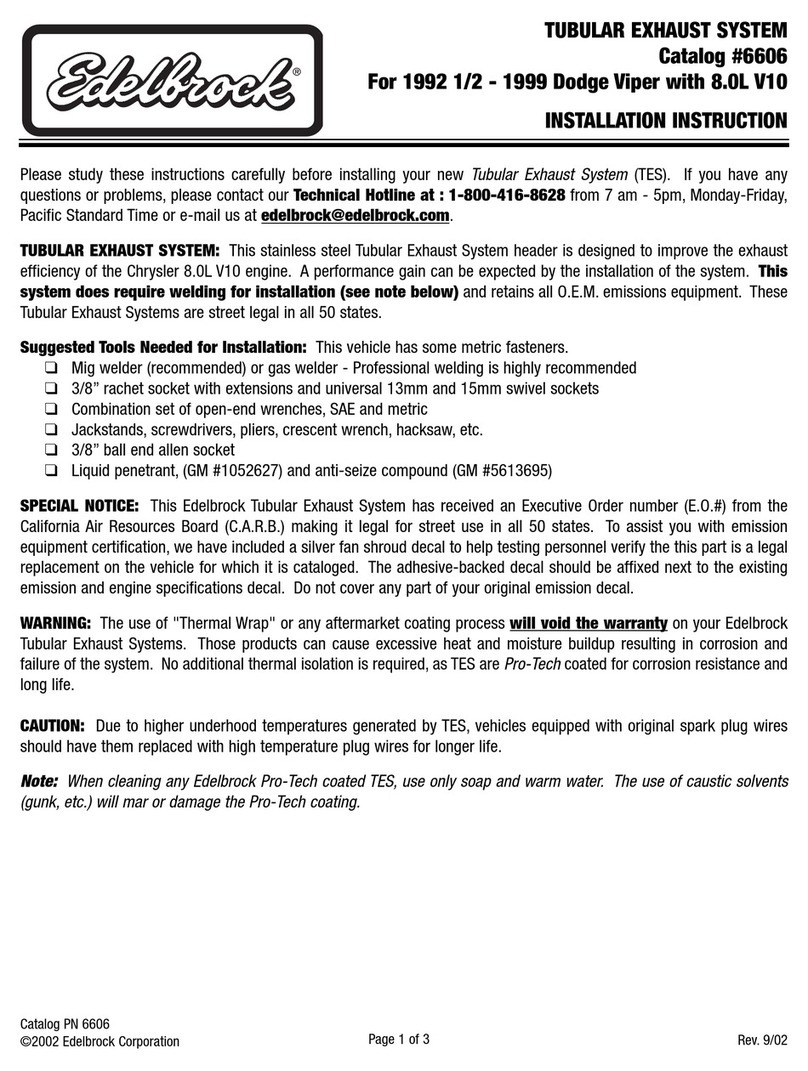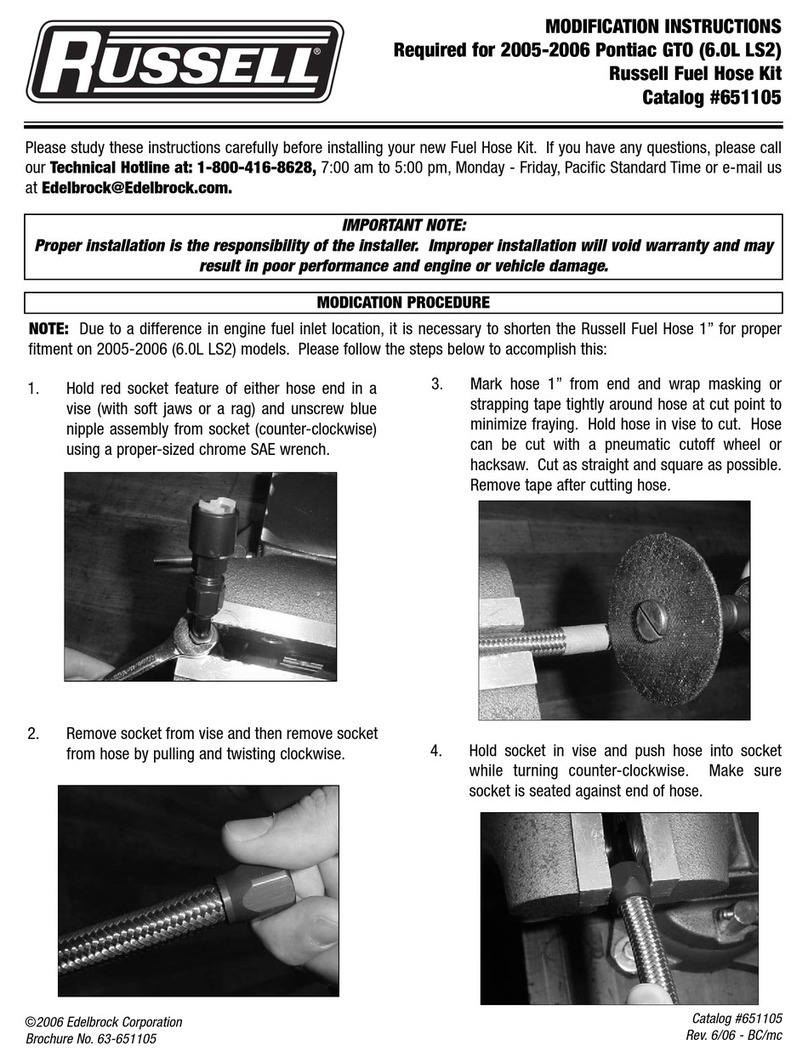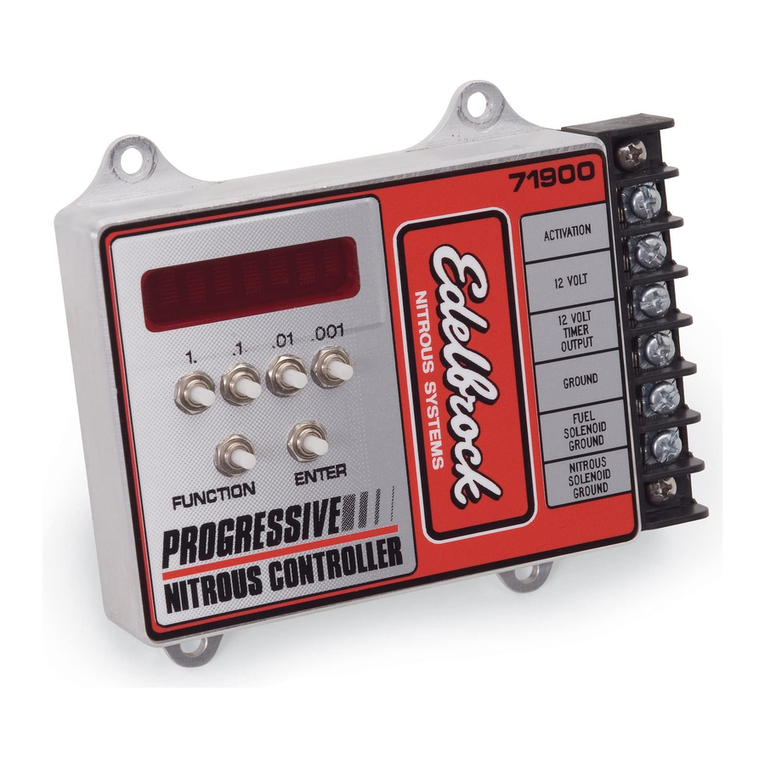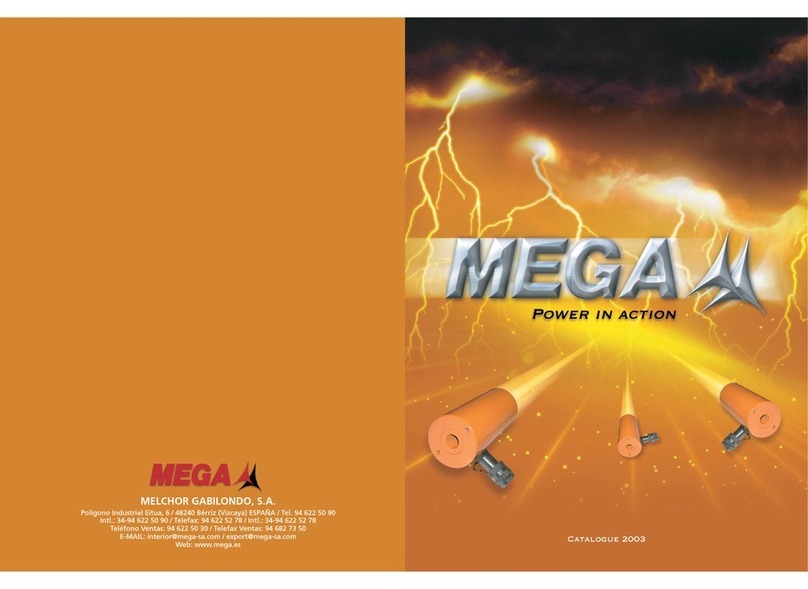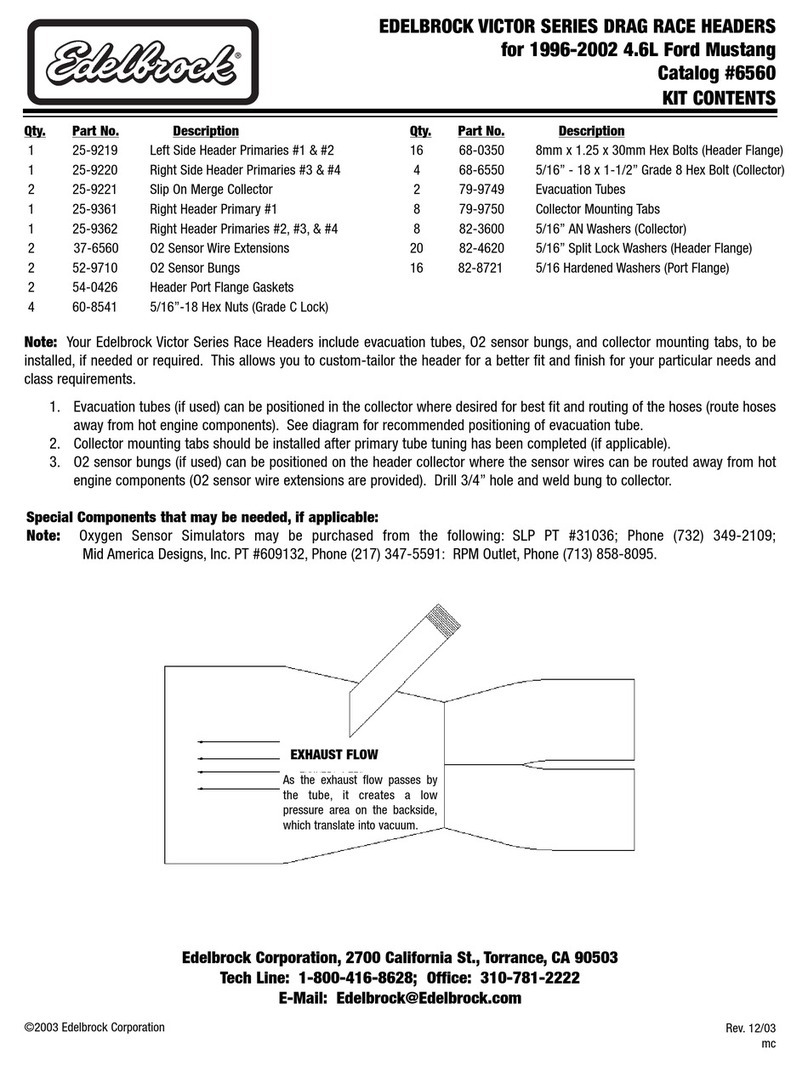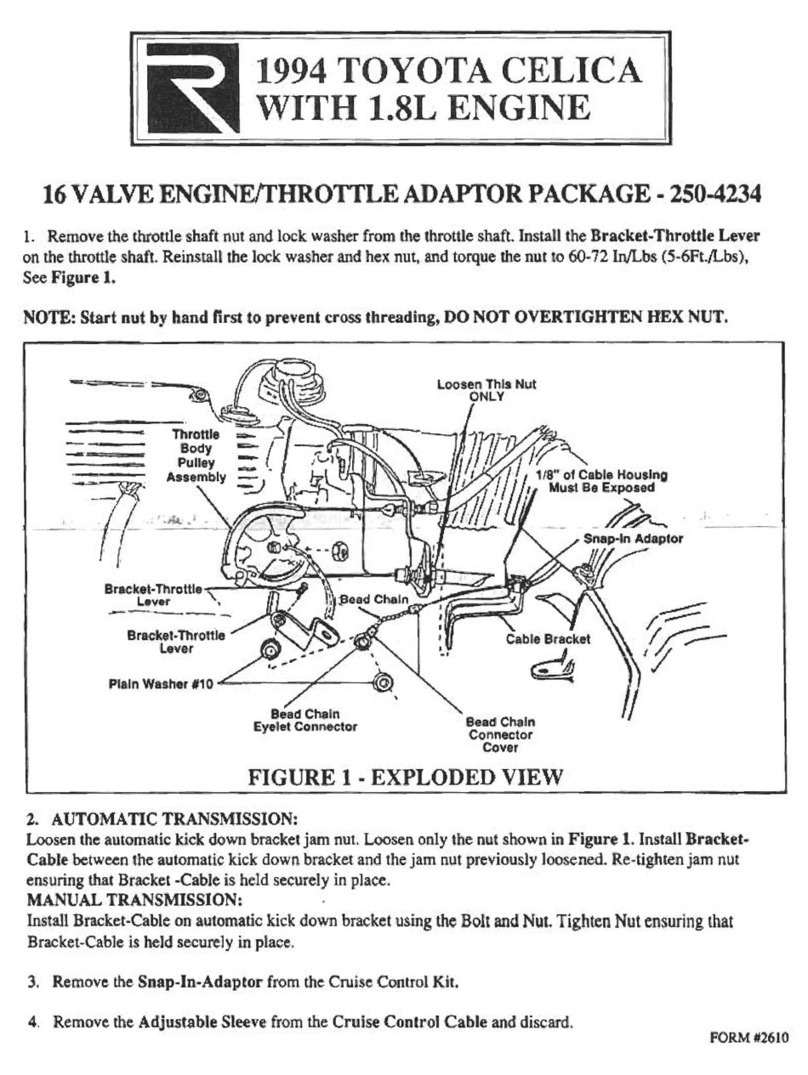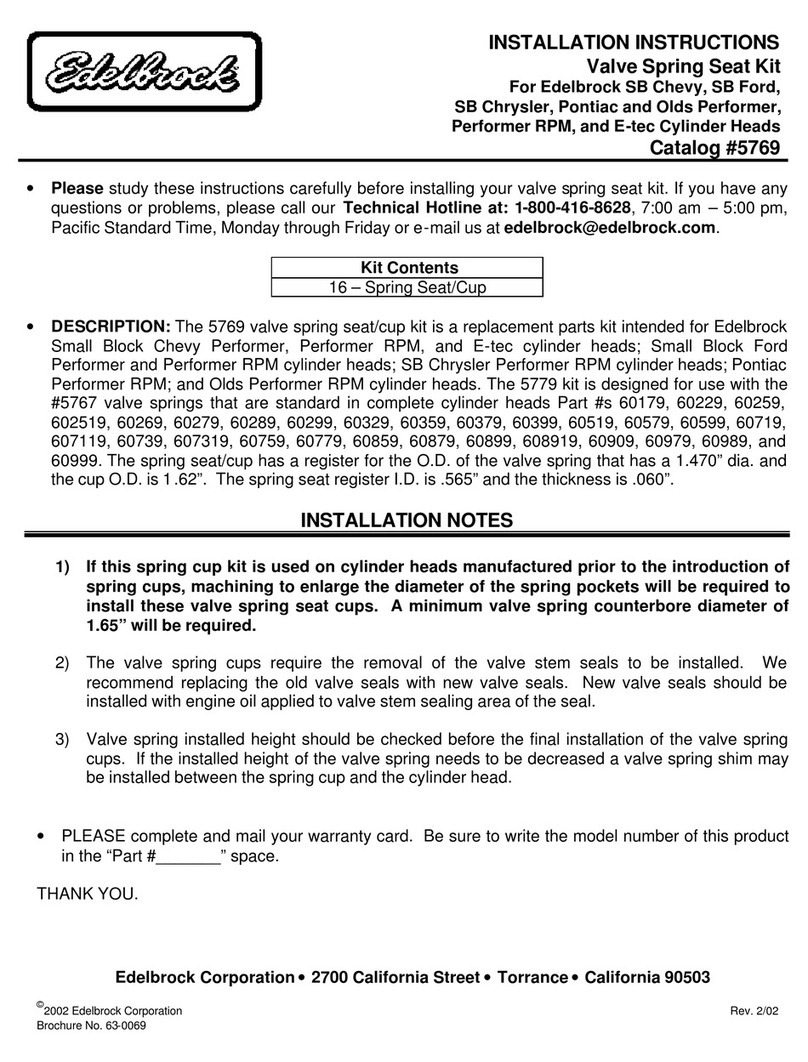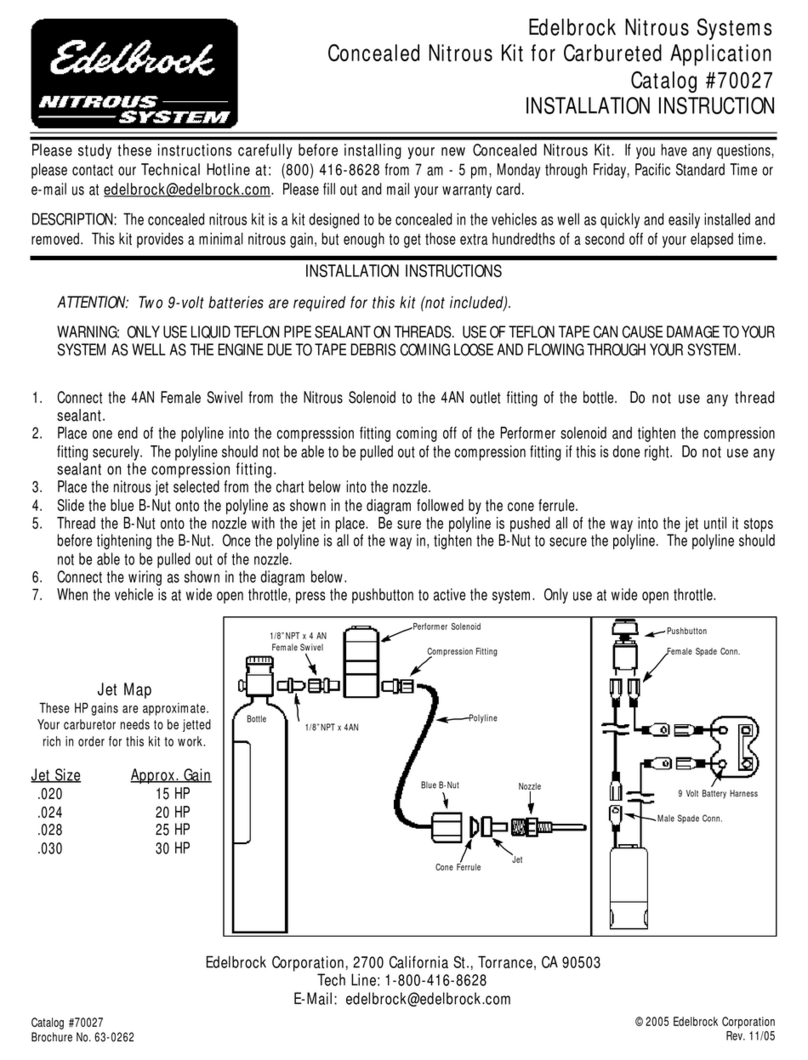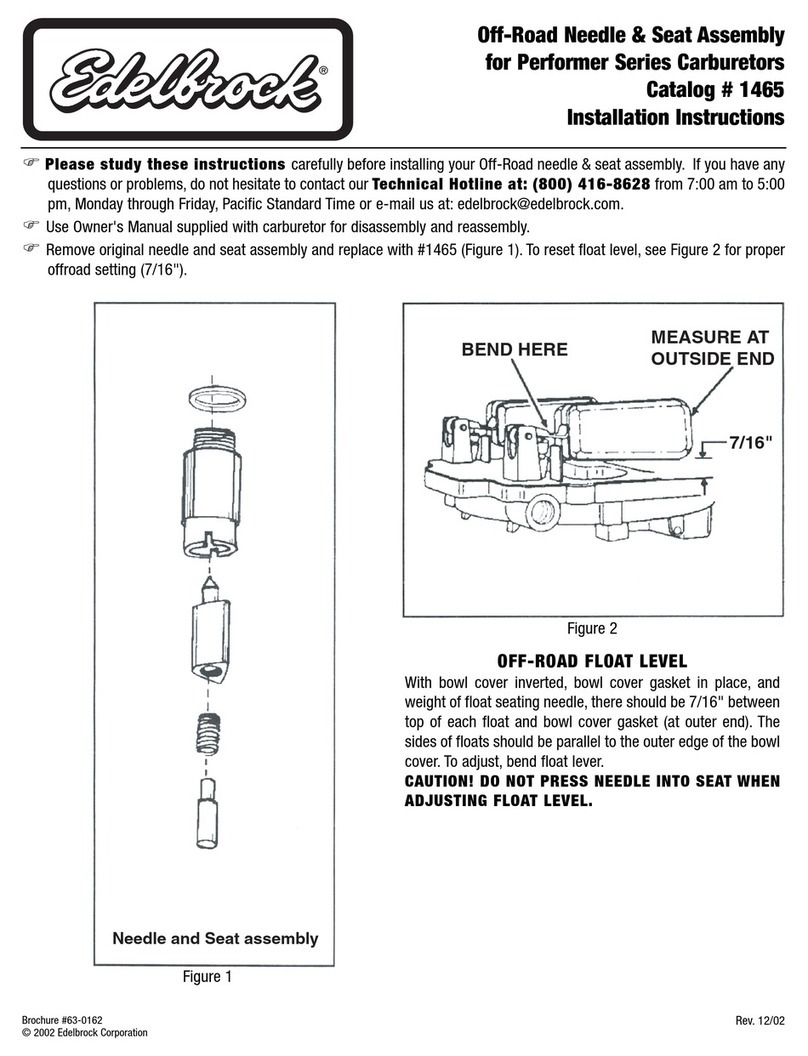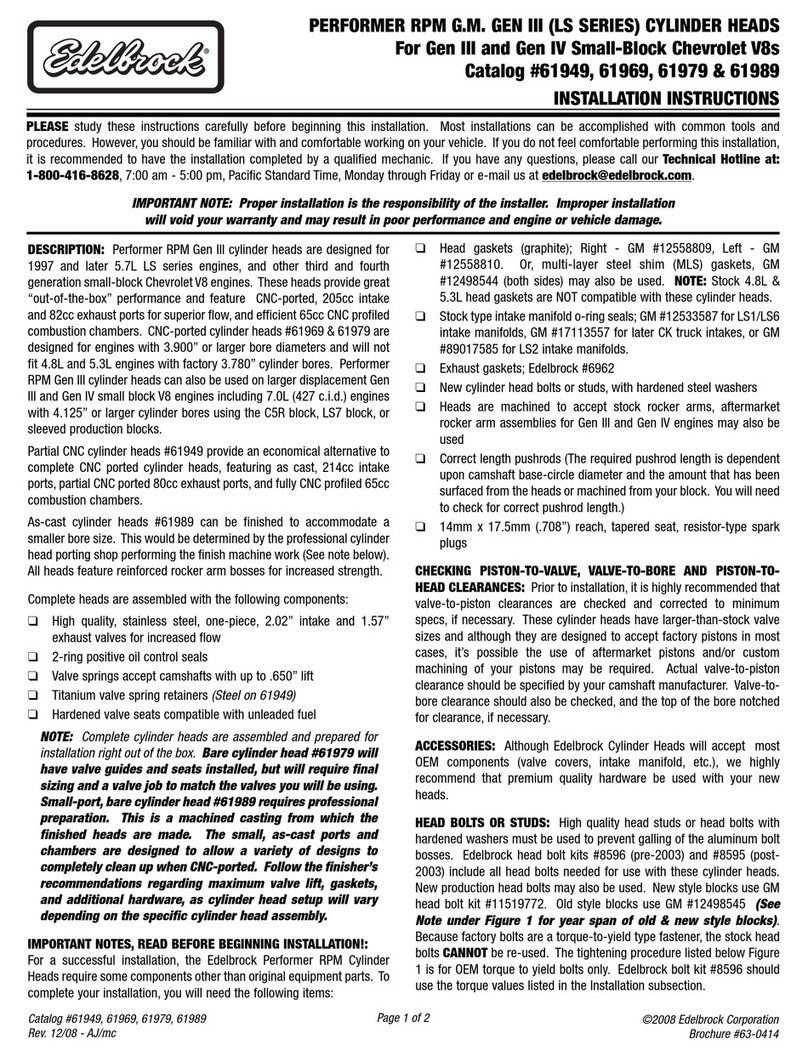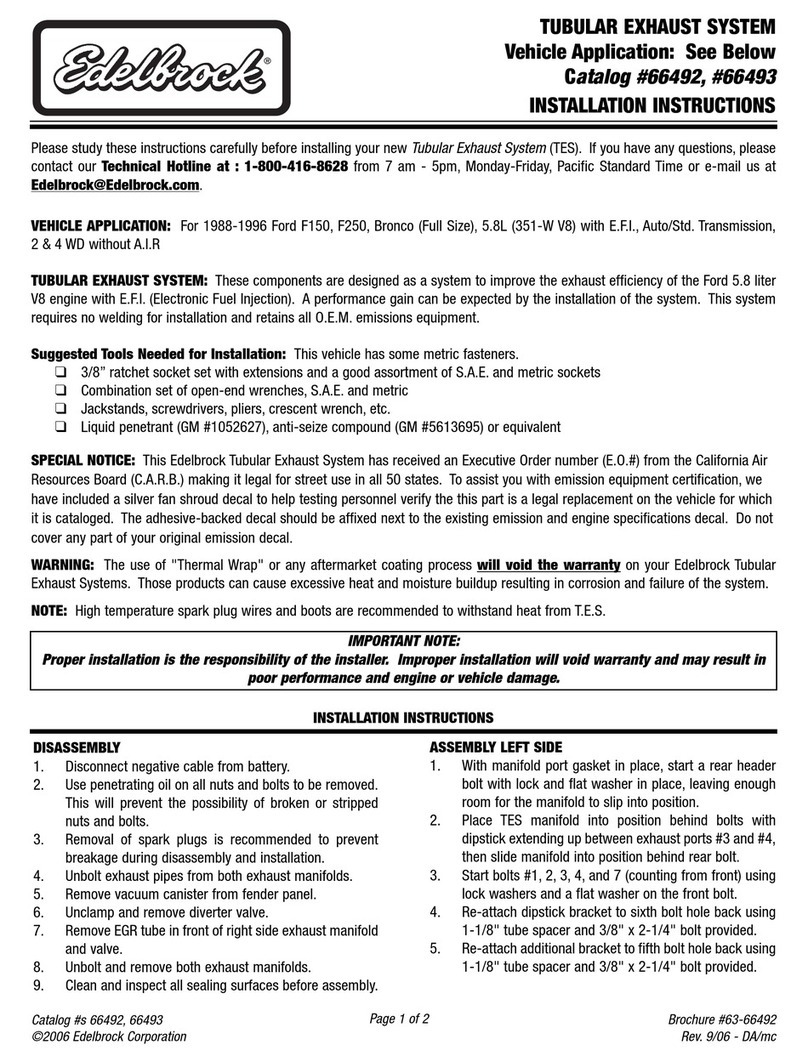
2
FIGURE2-PIGGYBACKSPRINGBRAKEDIAGRAM
EMERGENCY
PORT
SERVICE
PORT
MOUNTING
NUT
COTTERPIN
YOKE
LOCKNUT
SERVICE
PUSHROD
2. Checkpushrod toslackadjuster alignmentfromrelease
tofullstrokepositiontobesurethepushrodmovesout
andreturns properlywithoutbindingatthenon-pressure
plateholeorwithotherstructures.Alsochecktheangle
formedbythe slackadjusterarm and pushrod.It should
begreater than 90 degrees when thechamber is in the
releasedpositionandapproach90degreesatmaximum
readjustmentstroke.
3. Check tightness of mounting nuts. Torque on the non-
pressure plate mounting nuts should be 110 ft/lbs.
4. Check cotter pins to ensure they are in place.
5. Check all hoses and lines. They should be secure and
in good condition with sufficient length to allow for axle
movement.
Every3,600operating hours,100,000milesor one(1)year:
1. Disassemble and clean all parts. Clean all metal parts
incleaningsolvent,removingallrustandscale.Carefully
inspectallmetalparts for cracks, distortion or damage.
All diaphragm sealing surfaces should be smooth and
clean.
2. Installnewdiaphragm oranyotherparts if theyareworn
ordeteriorated. Performstepsoutlinedin"Replacingthe
Service Diaphragm". When the diaphragm, spring, or
both are replaced, they should be replaced in the
correspondingchamberonthesameaxle.
WARNING!
A piggyback spring brake chamber cannot have the
emergency diaphragm replaced. Replace the whole
piggyback spring brake chamber.
OPERATION & LEAKAGE TESTS
OPERATING TEST
1. Applybrakesand observe that the push rodsmoveout
promptlyandwithoutbinding.
2. Releasebrakesand observethatthe pushrodsreturn to
thereleasedpositionpromptlyandwithoutbinding.
3. Check push rod travel. Push rod travel should be as
shortaspossiblewithoutbrakes dragging.Adjust travel
of push rod at slack adjuster if necessary.
LEAKAGE TEST
1. Makeandhold a full brake application.
2. Usingsoapsolution,coatclampingring(s).If leakage is
detected, tighten clamping ring only enough to stop
leakage. DO NOT OVERTIGHTEN as this can distort
the sealing surface or clamping ring. Coat area around
pushrodhole(loosen boot if necessary). No leakageis
permitted. If leakage is detected, the diaphragm must
bereplaced.
WARNING! PLEASE READ AND FOLLOW
THESE INSTRUCTIONS TO AVOID
PERSONAL INJURYOR DEATH:
When working on or around a vehicle, the following
general precautions should be observed at all times.
1. Park the vehicle on a level surface, apply the park-
ing brakes, and always block the wheels. Always
wear safety glasses.
2. Stop the engine and remove ignition key when
working under or around the vehicle. When work-
ing in the engine compartment, the engine should
beshutoff and the ignition keyshould be removed.
Where circumstances require that the engine be
in operation, EXTREME CAUTION should be used
to prevent personal injury resulting from contact
with moving, rotating, leaking, heated or electri-
cally charged components.
3. Do not attempt to install, remove, disassemble or
assemble a component until you have read and
thoroughly understand the recommended proce-
dures. Use only the proper tools and observe all
precautions pertaining to use of those tools.
4. If the work is being performed on the vehicle’s air
brake system, or any auxiliary pressurized air sys-
tems, make certain to drain the air pressure from
all reservoirs before beginning ANY work on the
vehicle. If the vehicle is equipped with an AD-IS™
air dryer system or a dryer reservoir module, be
sure to drain the purge reservoir.






